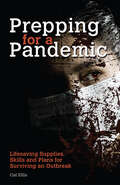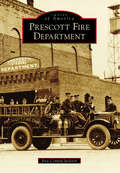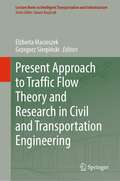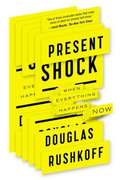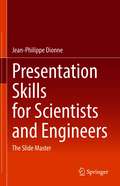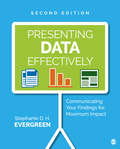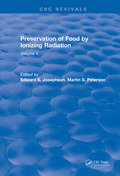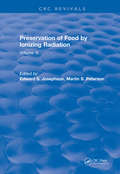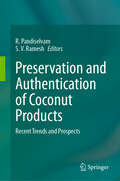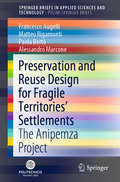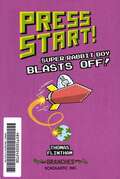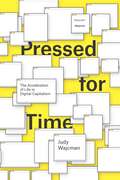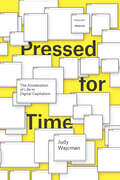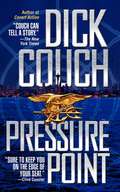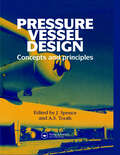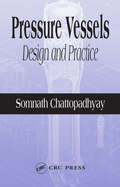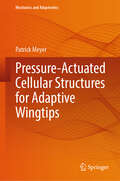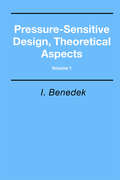- Table View
- List View
Prepping For A Pandemic: Life-saving Supplies, Skills And Plans For Surviving An Outbreak (Preppers Ser.)
by Cat EllisAN IN-DEPTH GUIDE TO PREPARE YOU AND YOUR FAMILY FOR A WIDESPREAD OUTBREAK OF ANY DEADLY DISEASE Every year pandemics strike! And they can easily spread all over the world--overwhelming doctors and hospitals. Will you be ready when a deadly epidemic hits your town? Prepping for a Pandemic provides the vital information and life-saving steps needed before and after an outbreak, including: *Outbreak Warning Signs *Initial Symptoms *Ease of Transmission *Quarantine Protocol *First Aid Skills *Medical Treatment *Future Threats *Home Remedies With detailed information on deadly diseases, tips on stockpiling supplies and plans for bugging out, this book offers everything required to keep you and your family safe.
Prescott Fire Department (Images of America)
by Eric Conrad JacksonFounded in 1885, the Prescott Fire Department began with four 25-man volunteer companies, the Dudes, the Toughs, the Mechanics Hook & Ladders, and the O.K.s. These 100 men reflected both the common man and the leaders of the region. Over the years, their numbers would include governors-to-be F.A. Tritle and Thomas Campbell, business leaders H.D. Aitken and A.A. "Tony" Johns, and numerous members of the Goldwater family. The department and its community survived the great fire of July 14, 1900, as well as the loss of 19 of its own Granite Mountain Hotshots on June 30, 2013. The Prescott Fire Department would go from a volunteer department to a fully paid department of 80 firefighters, operating out of five stations and covering an area of 40 square miles.
Present Approach to Traffic Flow Theory and Research in Civil and Transportation Engineering (Lecture Notes in Intelligent Transportation and Infrastructure)
by Elżbieta Macioszek Grzegorz SierpińskiThis book presents many valuable tips for making decisions related to traffic flow in the transport networks. The knowledge base in practical examples, as well as the decision support systems described in this book, finds interest among people who face the daily challenge of searching for solutions to the problems of contemporary transport networks and systems. The publication is therefore addressed to local authorities related to the planning and development of development strategies for selected areas with regard to transport (both in the urban and regional dimension) and to representatives of business and industry, as people directly involved in the implementation of traffic engineering solutions. The tips contained in individual sections of the publication allow to look at a given problem in an advanced way and facilitate the selection of the appropriate strategy (among others, in relation to the evaluation of BEV and FCHEV electric vehicles in the creation of a sustainable transport systems, development of ecological public transport on the example of selected cities, impact of drivers' waiting time on the gap acceptance at median, uncontrolled T-intersections). In turn, due to a new approach to theoretical models (including, inter alia, the application of genetic algorithms for the planning of urban rail transportation system, comprehensive estimate of life cycle costs of new technical systems using reliability verification algorithm, application and comparison of machine learning algorithms in traffic signals prediction), the publication also interests scientists and researchers carrying out research in this area.
Present Shock
by Douglas RushkoffPeople spent the twentieth century obsessed with the future. We created technologies that would help connect us faster, gather news, map the planet, and compile knowledge. We strove for an instantaneous network where time and space could be compressed. Well, the future's arrived. We live in a continuous now enabled by Twitter, email, and a so-called real-time technological shift. Yet this "now" is an elusive goal that we can never quite reach. And the dissonance between our digital selves and our analog bodies has thrown us into a new state of anxiety: present shock. Douglas Rushko weaves together seemingly disparate events and trends into a rich, nuanced portrait of how life in the eternal present has affected our biology, behavior, politics, and culture. "Invaluable." -- The New York Times "This is a wondrously thought-provoking book." -- Walter Isaacson "A sobering wake-up call to collectively reexamine our relationship with time before we're blindsided by an unwelcome future." --Booklist
Present Shock
by Douglas RushkoffPeople spent the twentieth century obsessed with the future. We created technologies that would help connect us faster, gather news, map the planet, and compile knowledge. We strove for an instantaneous network where time and space could be compressed. Well, the future's arrived. We live in a continuous now enabled by Twitter, email, and a so-called real-time technological shift. Yet this "now" is an elusive goal that we can never quite reach. And the dissonance between our digital selves and our analog bodies has thrown us into a new state of anxiety: present shock.
Presentation Skills for Scientists and Engineers: The Slide Master
by Jean-Philippe DionneThis book provides concise and effective tips spanning all relevant areas to deliver engaging scientific presentations. Readers will strengthen their skills in preparing, practicing and delivering presentations at both physical and virtual conferences and seminars. Best practices for structuring presentations and elements to include and those to exclude such as detailed sections on the use of videos, animations and tables are included. Common errors often seen in scientific presentations are highlighted along with tips on how to interact with audiences and keep them engaged. This will be a valuable resource for scientists in all areas of chemistry and materials science as well as engineers who wish to elevate their scientific presentations.
Presenting Data Effectively: Communicating Your Findings for Maximum Impact
by Stephanie Evergreen<p>Now in striking full color, <i>Presenting Data Effectively, Second Edition</i> by Stephanie D. H. Evergreen shows readers how to make the research results presented in reports, slideshows, dashboards, posters, and data visualizations more interesting, engaging, and impactful. <p>The book guides students, researchers, evaluators, and non-profit workers—anyone reporting data to an outside audience—through design choices in four primary areas: graphics, text, color, and arrangement. The Second Edition features an improved layout with larger screenshots, a review of the recent literature on data visualization, and input from a panel of graphic design experts.</p>
Preservation Of Food By Ionizing Radiation: Volume I
by JosephsonFood Scientists the world over should keep abreast of advances in konwledge and techniques in this developing new food process. The place to start is with these three volumes, which are, without question, the most comprehensive and the most authoritative source fo information on the basic science and technology yet published on food preservation by the application of ionizing radiation.
Preservation Of Food By Ionizing Radiation: Volume II
by Van C JosephsonFood Scientists the world over should keep abreast of advances in konwledge and techniques in this developing new food process. The place to start is with these three volumes, which are, without question, the most comprehensive and the most authoritative source fo information on the basic science and technology yet published on food preservation by the application of ionizing radiation.
Preservation Of Food By Ionizing Radiation: Volume III
by Peter JosephsonFood Scientists the world over should keep abreast of advances in konwledge and techniques in this developing new food process. The place to start is with these three volumes, which are, without question, the most comprehensive and the most authoritative source fo information on the basic science and technology yet published on food preservation by the application of ionizing radiation.
Preservation and Authentication of Coconut Products: Recent Trends and Prospects
by S. V. Ramesh R. PandiselvamCoconut is an important economic crop widely cultivated in island and coastal ecosystems in the tropical and sub-tropical regions of the world. Emerging trends in biochemical characterization have highlighted the nutraceutical and nutritional importance of coconut and its products. However, the short shelf life of these products seriously restricts their market potential. Coconut beverages such as coconut water, inflorescence sap and coconut milk have numerous health promoting nutrients, although the highly perishable nature of coconut beverages and products causes significant post-harvest losses. Conventional thermal technologies implemented by the coconut processing industry affect the heat sensitive nutrients and create a negative impact on the color and flavor profiles of the products. Producers have been looking for an efficient alternative to thermal technologies, although most of the emerging non-thermal technologies such as cold plasma, ozone, pulsed light, UV-light, pulsed electric field and high-pressure processing are in lab scale. It is important to understand the practical application of these technologies at industry scale. Also, it is important to analyze the influence and application of these emerging technologies on the quality profile, safety and shelf-life extension of the products. The adulteration rate in coconut products has been increasing along with their prices, making it vital to understand the application of non-destructive tools for authentication. Preservation and Authentication of Coconut Products: Recent Trends and Prospects offers comprehensive coverage on the application of emerging technologies in coconut and coconut-based products. Present industrial technologies for coconut products and their impact on quality are covered in full, including technologies for each specific product and their challenges and prospects. Non-destructive tools and applications for the quantification of bioactive components and authentication are also explored. This book serves as a one-stop reference for researchers, food technologists, food industry specialists and nutritionists looking to understand the implications of emerging food processing technologies on the quality of coconut products.
Preservation and Reuse Design for Fragile Territories’ Settlements: The Anipemza Project (SpringerBriefs in Applied Sciences and Technology)
by Francesco Augelli Matteo Rigamonti Paola Bertò Alessandro MarconeThis book reports on an architectural conservation and reuse project in Anipemza, an Armenian Soviet-era village on the Turkish border, just a few steps away from the important Yererouyk archaeological site. Based on current tourist trends, the book suggests the development of a social system and micro-economic reactivation model to endorse the territory’s numerous cultural resources and preserve the memory of the village that housed the genocide orphanages and the many other stories associated with the village. Further, the development of sustainable tourism will lead to an improved relationship between locals and visitors. Examining the development of a system of strategies able to cope with the existing social, economic and hygiene problems as well as the architectural preservation aims, the book provides valuable guidelines for the local community.
Preserving Food without Freezing or Canning: Traditional Techniques Using Salt, Oil, Sugar, Alcohol, Vinegar, Drying, Cold Storage, and Lactic Fermentation
by Diane Côté Claude AubertTypical books about preserving garden produce nearly always assume that modern "kitchen gardeners" will boil or freeze their vegetables and fruits. Yet here is a book that goes back to the future, celebrating traditional but little-known French techniques for storing and preserving edibles in ways that maximize flavor and nutrition. Translated into English, and with a new foreword by Deborah Madison, this book deliberately ignores freezing and high-temperature canning in favor of methods that are superior because they are less costly and more energy-efficient. As Eliot Coleman says in his foreword to the first edition, "Food preservation techniques can be divided into two categories: the modern scientific methods that remove the life from food, and the natural 'poetic' methods that maintain or enhance the life in food. The poetic techniques produce... foods that have been celebrated for centuries and are considered gourmet delights today." Preserving Food without Freezing or Canning offers more than 250 easy and enjoyable recipes featuring locally grown and minimally refined ingredients. It is an essential guide for those who seek healthy food for a healthy world.
Presidential Takedown: How Anthony Fauci, the CDC, NIH, and the WHO Conspired to Overthrow President Trump
by Kent Heckenlively Dr. Paul Elias AlexanderAn explosive behind-the-scenes look at Donald Trump's final months in office and how the COVID crisis response was a carefully crafted plan to ruin him.In January 2020, Donald Trump was on the fast track to an easy re-election. While his first two years had been stymied by House Speaker Paul Ryan, Senate Majority Leader Mitch McConnell, and the Democrats, his third year had been one of remarkable success. The United States had low unemployment and was making strides across the globe. The president's rallies were well-attended, and he was being projected to win four hundred electoral votes and about forty-five states. Then came COVID-19.Dr. Paul Elias Alexander, former Senior Advisor to COVID Pandemic policy in the US government for President Trump and former COVID Pandemic evidence-synthesis advisor to WHO-PAHO, was on the frontlines to watch how Trump's world, and his reelection hopes, slowly collapsed leading up to November 2020—due to the CDC, NIH, and WHO conspiring to overthrow him with the worst response possible to the COVID crisis.Supported by emails and documents, career epidemiologist Alexander and New York Times-bestselling author Kent Heckenlively, JD, will not only show proof of a presidential takedown, but also of the personal vendetta of the CDC and HHS against Alexander himself. From unnecessary lockdowns, school closures, and mask mandates to the dismissal of effective treatments like hydroxychloroquine, ivermectin, and vitamin D and even threats against President Trump and his family, Presidential Takedown: How Anthony Fauci, the CDC, NIH, and the WHO Conspired to Overthrow President Trump is the inside story of what really happened from those first COVID-19 reports to President Trump's "loss" in November.
Press Start Super Rabbit Boy Blasts Off! (Press Start! #5)
by Thomas FlinthamPick a book. Grow a Reader!This series is part of Scholastic's early chapter book line, Branches, aimed at newly independent readers. With easy-to-read text, high-interest content, fast-paced plots, and illustrations on every page, these books will boost reading confidence and stamina. Branches books help readers grow!Help! Meanie King Viking is causing trouble out in space! Super Rabbit Boy knows he can stop him. But can he fly a wobbly Level 1 rocketship, stop an army of space robots, and find King Viking? This latest Press Start! adventure is simply out of this world!With full-color art by Thomas Flintham!
Pressed for Time: The Acceleration of Life in Digital Capitalism
by Judy WajcmanThe technologically tethered, iPhone-addicted figure is an image we can easily conjure. Most of us complain that there aren't enough hours in the day and too many e-mails in our thumb-accessible inboxes. This widespread perception that life is faster than it used to be is now ingrained in our culture, and smartphones and the Internet are continually being blamed. But isn't the sole purpose of the smartphone to give us such quick access to people and information that we'll be free to do other things? Isn't technology supposed to make our lives easier? In Pressed for Time, Judy Wajcman explains why we immediately interpret our experiences with digital technology as inexorably accelerating everyday life. She argues that we are not mere hostages to communication devices, and the sense of always being rushed is the result of the priorities and parameters we ourselves set rather than the machines that help us set them. Indeed, being busy and having action-packed lives has become valorized by our productivity driven culture. Wajcman offers a bracing historical perspective, exploring the commodification of clock time, and how the speed of the industrial age became identified with progress. She also delves into the ways time-use differs for diverse groups in modern societies, showing how changes in work patterns, family arrangements, and parenting all affect time stress. Bringing together empirical research on time use and theoretical debates about dramatic digital developments, this accessible and engaging book will leave readers better versed in how to use technology to navigate life's fast lane.
Pressed for Time: The Acceleration of Life in Digital Capitalism
by Judy WajcmanThe technologically tethered, iPhone-addicted figure is an image we can easily conjure. Most of us complain that there aren't enough hours in the day and too many e-mails in our thumb-accessible inboxes. This widespread perception that life is faster than it used to be is now ingrained in our culture, and smartphones and the Internet are continually being blamed. But isn't the sole purpose of the smartphone to give us such quick access to people and information that we'll be free to do other things? Isn't technology supposed to make our lives easier? In Pressed for Time, Judy Wajcman explains why we immediately interpret our experiences with digital technology as inexorably accelerating everyday life. She argues that we are not mere hostages to communication devices, and the sense of always being rushed is the result of the priorities and parameters we ourselves set rather than the machines that help us set them. Indeed, being busy and having action-packed lives has become valorized by our productivity driven culture. Wajcman offers a bracing historical perspective, exploring the commodification of clock time, and how the speed of the industrial age became identified with progress. She also delves into the ways time-use differs for diverse groups in modern societies, showing how changes in work patterns, family arrangements, and parenting all affect time stress. Bringing together empirical research on time use and theoretical debates about dramatic digital developments, this accessible and engaging book will leave readers better versed in how to use technology to navigate life's fast lane.
Pressure Point
by CouchDelivering "a gripping insider's view of the secret world of nuclear security" (W.E.B. Griffin), Dick Couch's explosive novel poses the chilling and timely question: How safe are America's waterways from terrorist threat? Riding quietly at her moorings on Puget Sound, the U.S. Navy's deadly weapon -- the Trident submarine -- waits for her return to the sea. But an Arab terrorist known as the Shadow has targeted the USS Michigan, with nearly three hundred nuclear warheads nestled in its missile silos. He intends to take the deadliest weapon of the Cold War and turn it into the deadliest dirty bomb conceivable -- by hijacking the Spokane, flagship of the nation's largest ferry fleet. The nation, caught by surprise, sends a select team of Navy SEALs to stop the Shadow. They are aided by a savvy FBI agent and the ferry's captain, Ross Peck. Unless the U.S. wields its political might to support his terrorist brothers in the Middle East, the Shadow will unleash a radiological holocaust, and a nightmare beyond imagining. . . .
Pressure Vessel Design: Concepts and principles
by J. Spence A. S. ToothThis book derives from a 3 day intensive course on Pressure Vessel Design given regularly in the UK and around the world since 1986. It is written by experts in their field and although the main thrust of the Course has been directed to BS5500, the treatment of the material is of a general nature thus providing insight into other national standards
Pressure Vessels: Design and Practice (Mechanical And Aerospace Engineering Ser.)
by Somnath ChattopadhyayWith very few books adequately addressing ASME Boiler & Pressure Vessel Code, and other international code issues, Pressure Vessels: Design and Practice provides a comprehensive, in-depth guide on everything engineers need to know. With emphasis on the requirements of the ASME this consummate work examines the design of pressure vessel com
Pressure and Temperature Sensitive Paints (Experimental Fluid Mechanics)
by Christian Klein John P. Sullivan Tianshu Liu Keisuke Asai Yasuhiro EgamiThis new edition describes pressure and temperature sensitive paints (PSP and TSP) in global surface pressure and temperature measurements in aerodynamics and fluid mechanics. The book includes the latest progress in paint formulations, instrumentation, and steady and unsteady aerodynamic measurements in various facilities including low-speed, transonic, supersonic and hypersonic wind tunnels. The updated technical aspects of PSP and TSP in the book will be useful for students and researchers in experimental aerodynamics and fluid mechanics.
Pressure-Actuated Cellular Structures for Adaptive Wingtips (Mechanics and Adaptronics)
by Patrick MeyerAviation has a substantial environmental impact, necessitating a shift towards more sustainability. High-aspect-ratio (HAR) wings increase the efficiency of future transport aircraft by significantly reducing induced drag and, consequently, fuel consumption. However, the extended wingspan of HAR wings is accompanied by challenges, including ground operations, structural loads, and aircraft control. Folding wingtips (FWTs) address these challenges by incorporating a hinge at the outboard wing section, enabling the wingtip to fold during ground operations or specific flight scenarios. Wingtip actuators that allow active adjustment of the wingtip's cant angle and hinge stiffness can expand the potential operating modes of FWTs beyond the current state-of-the-art. Possible operating modes include extended load alleviation, mission adaptability, advanced flight control, and active flutter suppression. While most research on FWTs focuses on flight dynamics and aeroelasticity, little attention has been given to the structural design of wingtip actuators. This book introduces an actuator concept that transforms FWTs into multifunctional wingtip devices, referred to as actuated adaptive wingtips. The concept of actuated adaptive wingtips is based on a compliant morphing structure that adapts its mechanical properties by varying the fluid pressure in structure-integrated chambers.
Pressure-Sensitive Adhesives and Applications (Handbook Of Pressure-sensitive Adhesives And Products Ser.)
by Istvan BenedekPressure-Sensitive Adhesives and Applications, Second Edition explains how pressure-sensitive adhesives (PSAs) work, why they are used, and the technology used to manufacture them. This second edition features the latest developments in the field.Dr. Benedek discusses the factors that affect the rheology and special flow characteristics res
Pressure-Sensitive Design and Formulation, Application
by Istvan BenedekGrowing interest in the formulation of pressure-sensitive adhesives as described in the first edition of this book ( Pressure-Sensitive Formulation, VSP, 2000) required a new, enlarged edition including the design of pressure-sensitive adhesives as a separate volume. Developments in the understanding of pressure sensitivity were necessary to use ma
Pressure-Sensitive Design, Theoretical Aspects
by Istvan BenedekGrowing interest in the formulation of pressure-sensitive adhesives as described in the first edition of this book ( Pressure-Sensitive Formulation, VSP, 2000) required a new, enlarged edition including the design of pressure-sensitive adhesives as a separate volume. Developments in the understanding of pressure sensitivity were necessary to use ma
